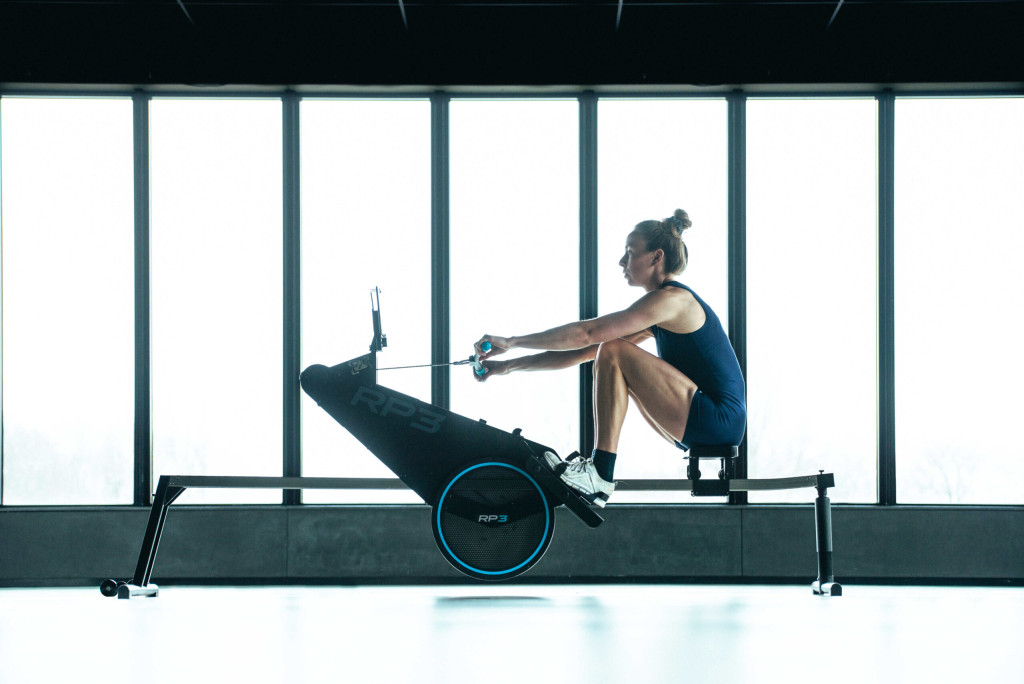Best low-impact cardio options for home
Discover 5 effective low-impact cardio options for home workouts that protect your joints while boosting fitness. Transform your health journey with these sustainable exercises for
Yes, rowing is generally superior to cycling for full-body training. Rowing engages approximately 85% of your muscles, working both upper and lower body simultaneously, while cycling primarily targets the lower body. Rowing provides comprehensive muscular engagement, effective cardiovascular conditioning, and higher calorie burn, all with minimal joint impact. The dynamic full-body nature of rowing makes it a more efficient total-body workout, though both exercises have their unique benefits depending on your specific fitness goals. Always consult with your doctor before beginning any new exercise regimen.
When creating an effective home fitness routine, many enthusiasts find themselves weighing the benefits of rowing against cycling. Both are popular low-impact cardio options that can fit comfortably in your home gym setup, but they differ significantly in how they engage your body.
The comparison matters because most of us have limited time, space, and budget for fitness equipment. Choosing between these two popular exercises often comes down to understanding which one aligns better with your personal fitness objectives.
Throughout this article, we’ll examine several critical factors: muscle engagement patterns, cardiovascular benefits, calorie-burning potential, impact on joint health, accessibility for beginners, and how these exercises might complement each other. This information will help you make an informed decision about which exercise might better serve your full-body training goals.
Rowing engages approximately 85% of your body’s muscles, making it a far more comprehensive workout than cycling, which primarily targets the lower body. This fundamental difference is why rowing is often considered superior for full-body training.
A rowing stroke activates multiple muscle groups in sequence:
In contrast, cycling primarily works:
This difference in muscle recruitment explains why rowing provides a more balanced full-body workout. While cycling excels at building lower body strength and endurance, it leaves the upper body largely untrained. If your goal is comprehensive muscular development, rowing offers the advantage of training both halves of your body in a single, coordinated movement pattern.
Both rowing and cycling deliver excellent cardiovascular benefits, but they challenge your heart and lungs in different ways. Rowing typically produces a more comprehensive cardiovascular response because it engages more muscle groups simultaneously.
When rowing, your heart must supply oxygen-rich blood to both upper and lower body muscles, creating a more demanding cardiovascular workout. This trains your heart to become more efficient at pumping blood throughout your entire body. The rowing stroke also naturally encourages a rhythmic breathing pattern that coordinates with your movement.
Cycling provides strong cardiovascular benefits as well, particularly for developing aerobic endurance. Many cyclists find it easier to maintain steady-state cardio for extended periods compared to rowing, which can be more technically demanding.
Both exercises allow for interval training, which is particularly effective for cardiovascular development. You can easily adjust resistance and intensity on both rowing machines and bikes to create varied workout profiles that target different heart rate zones.
For overall cardiovascular development, rowing holds a slight edge due to its full-body nature, but cycling remains an excellent option—especially for those who enjoy longer, steady-state cardio sessions. Your personal preference and ability to maintain proper form may ultimately determine which provides better cardiovascular benefits for you.
Rowing typically burns more calories than cycling at comparable intensity levels due to its full-body nature. Since rowing engages more muscle groups simultaneously, it requires more energy and thus leads to higher calorie expenditure overall.
Several factors influence exactly how many calories you’ll burn during either activity:
With proper form, rowing creates a continuous chain of muscle activation from legs to core to upper body, requiring significant energy output. The dynamic nature of rowing—where both you and the machine move together—further increases energy expenditure compared to stationary activities.
Cycling can still provide impressive calorie-burning benefits, especially during high-intensity interval sessions or challenging hill climbs. It also allows many people to exercise comfortably for longer durations, potentially increasing total calories burned through extended workout times.
For those primarily focused on calorie burning and weight management, rowing offers more bang for your buck in shorter time frames. However, the best exercise for calorie burning is ultimately the one you enjoy enough to perform consistently and with proper intensity.
Both rowing and cycling are considered low-impact exercises that are generally kind to your joints, but they affect different joints in distinct ways. The ideal choice often depends on your specific joint concerns and physical condition.
Rowing, particularly on a dynamic rowing machine, distributes work across more joints while keeping impact minimal. The sliding motion of a dynamic rower reduces stress on the lower back compared to static machines, creating a more natural movement pattern. The fluid rowing stroke, when performed correctly, places joints in mechanically advantageous positions throughout the movement.
Cycling excels at minimizing impact on the knees and hips since your weight is supported by the saddle. This makes it particularly suitable for those recovering from certain lower body injuries or managing conditions like osteoarthritis in weight-bearing joints.
Important joint considerations for each activity:
For optimal joint health, proper equipment setup and technique are essential with either exercise. Dynamic rowing machines that move with your body typically provide a more joint-friendly experience than static models, while properly fitted cycles with correct seat and handlebar height minimize strain.
Cycling generally offers a gentler learning curve for beginners compared to rowing, but both activities have their own considerations for those just starting out.
Most people have cycled at some point in their lives, making the basic movement pattern familiar. Indoor cycling requires minimal technique adjustment—you simply pedal at various resistance levels. This accessibility allows beginners to focus immediately on building fitness rather than mastering complex movements.
Rowing involves a more technical stroke sequence that takes time to learn properly. Many beginners make common mistakes like rowing primarily with their arms instead of initiating with the legs, or hunching their backs during the stroke. These technique errors not only reduce effectiveness but can potentially lead to discomfort or injury.
For beginners considering rowing:
For beginners considering cycling:
While rowing has a steeper initial learning curve, many beginners find the full-body benefits worth the investment in technique development. Cycling offers quicker accessibility but may eventually require supplemental upper body training for balanced fitness.
Absolutely! Combining rowing and cycling creates a complementary fitness routine that maximizes the benefits of both while addressing the limitations of each. This balanced approach can lead to better overall fitness results and reduced risk of overuse injuries.
An effective combined approach might include:
For those with time constraints, rowing might take priority for its full-body efficiency. A single 20-30 minute rowing session can provide both strength and cardio benefits comparable to separate upper body, lower body, and cardiovascular workouts.
Those who particularly enjoy cycling or find it more comfortable might use it as their primary cardio exercise while adding shorter rowing sessions specifically to develop upper body and core strength.
Consider structuring your weekly routine with complementary workouts:
This approach provides comprehensive fitness development while allowing adequate recovery for different muscle groups.
When deciding between rowing and cycling for your home fitness regimen, consider your primary goals and physical considerations:
Your personal enjoyment matters tremendously—the most effective exercise is ultimately the one you’ll perform consistently. Some people find the rhythmic nature of rowing meditative, while others prefer the familiarity of cycling.
At RP3 Rowing, we’ve dedicated ourselves to creating dynamic rowing machines that provide the most realistic and effective indoor rowing experience possible. Our Model S and Model T rowing machines move with you during the stroke, simulating the on-water experience while reducing stress on your joints.
Whether you choose rowing, cycling, or a combination of both, the key is consistent, mindful practice with proper technique. Both exercises offer valuable fitness benefits that can significantly improve your health and wellbeing when performed regularly as part of a balanced fitness programme.
If you’re interested in learning more about the science of rowing, reach out to our team of experts today.
Discover 5 effective low-impact cardio options for home workouts that protect your joints while boosting fitness. Transform your health journey with these sustainable exercises for
Discover 5 effective low-impact exercises that protect your back while maintaining fitness intensity. Learn proper form techniques to strengthen your spine without risking injury.
Discover 5 effective home workouts that build strength without stressing your joints. Learn fluid movement techniques for pain-free exercise that delivers results while protecting your
Discover effective low-impact fitness strategies that build strength and cardio health without damaging your joints. Learn sustainable workout techniques for long-term health and injury prevention.
Discover 5 effective full-body low-impact workouts perfect for beginners that protect your joints while building strength and fitness. Start your sustainable exercise journey today!
Discover how low-impact fitness creates sustainable health benefits without joint pain. Learn 5 full-body workouts that deliver results while preserving your body for decades of
Discover why low-impact workouts deliver powerful fitness results without joint damage. Learn 6 key benefits and find the perfect exercise for sustainable daily fitness that
Discover why low-impact training on recovery days accelerates muscle repair, prevents injuries, and boosts long-term fitness gains. Learn optimal activities and avoid common recovery mistakes.
Discover why rowing machines deliver a complete workout while protecting your joints. Engage 85% of your muscles with zero impact stress—perfect for fitness enthusiasts of
Discover effective low-impact exercises perfect for returning to fitness after breaks or injuries. Learn 5 joint-friendly workouts that rebuild strength while preventing setbacks on your
Discover how rowing uniquely engages 85% of your muscles while enhancing flexibility in one efficient workout. Build strength and mobility simultaneously without stressing your joints.
Discover 5 low-impact routines that challenge your entire body without stressing your joints. Build strength and burn calories while protecting your knees, hips, and spine.
Discover how consistent low-impact activity delivers powerful physical and mental benefits without joint stress. Build fitness, reduce stress, and improve mobility through sustainable daily movement
Discover why rowing machines offer the ultimate low-impact, full-body workout for home fitness. Get 85% muscle engagement with minimal joint stress—perfect for all ages and
Discover how low-impact exercise protects your joints while delivering powerful fitness results. Learn 5 joint-friendly workouts that maintain mobility and prevent pain as you age.
Discover how to build sustainable low-impact fitness habits that protect your joints while delivering exceptional results. Learn proven strategies for lifelong exercise consistency without pain.

We will send you a personal quote as soon as possible.
As soon as the quote is ready, you will receive a link by email to order directly.
